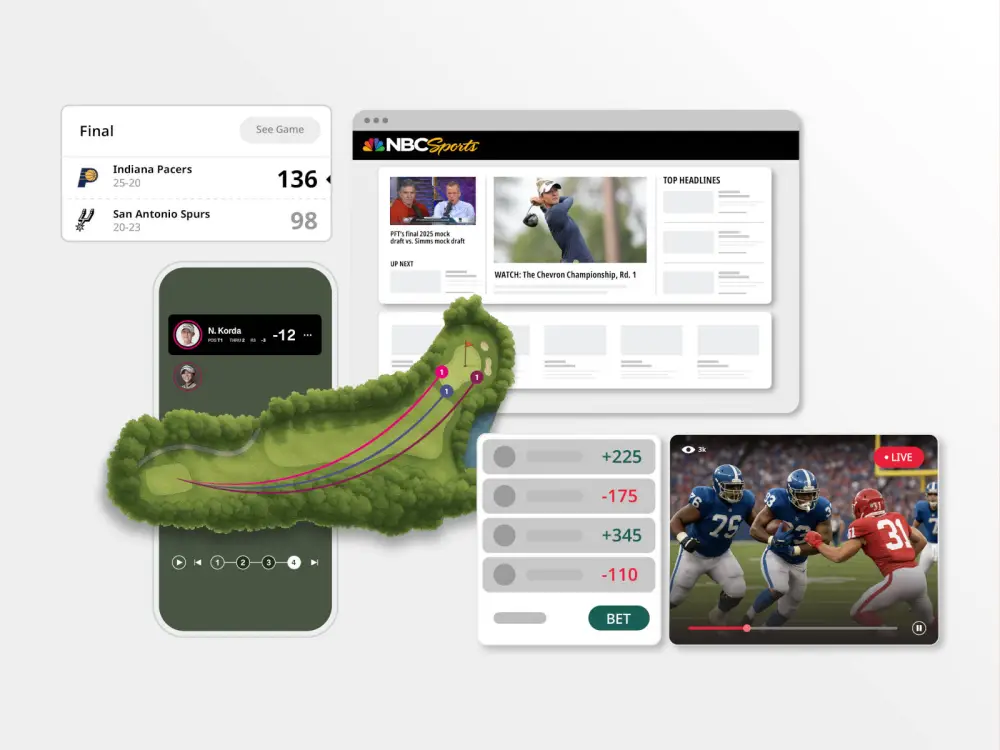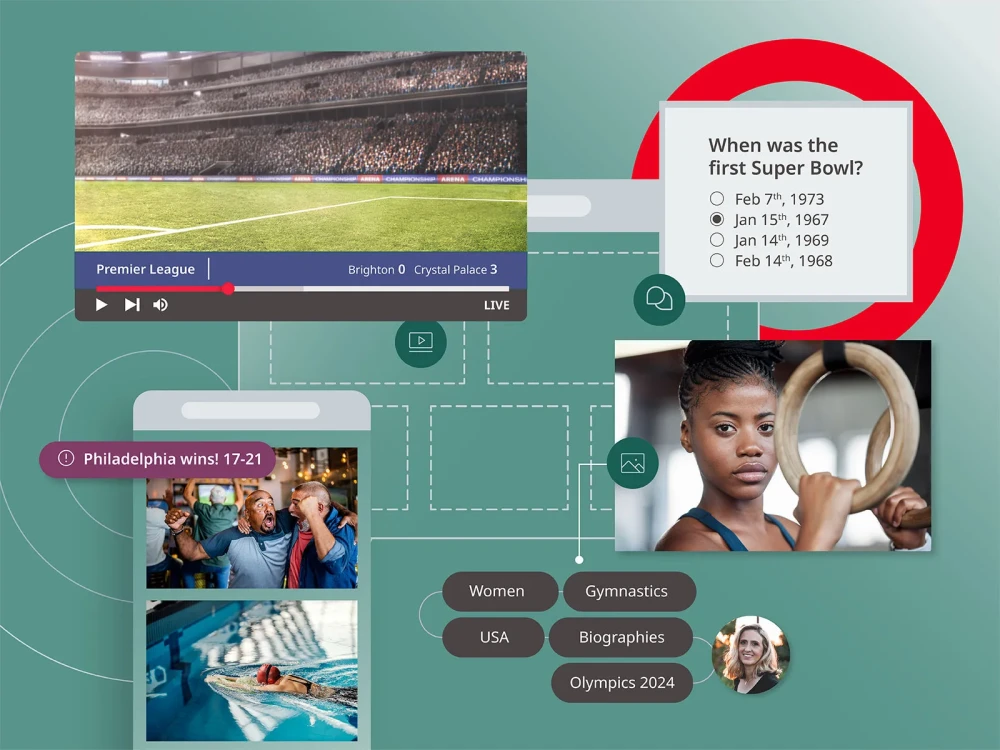Fandom is the heartbeat of sports. But in today’s click-culture world, the definition of a fan is evolving. No longer confined to hometown loyalty or game-day rituals, modern fandom is participatory, personal and shaped as much by off-field narratives as it is by on-field performance.
This shift is transforming how leagues, teams and athletes engage audiences. And at the center of this evolution are the athletes themselves — not just as players but as personal brands and media platforms.
The line between athlete and creator is gone. The most compelling content doesn’t only come from the broadcast feed — it comes from a phone in the locker room, posted directly to fans.
What it means to be a fan today
A fan is no longer just a spectator. Today’s fan is a follower, a commentator, a co-creator. They’re watching games, yes, but they’re also scrolling through behind-the-scenes footage, voting in social polls, debating trade rumors on Reddit and clicking “add to cart” on an athlete’s pregame outfit.
The NBA has embraced this shift with initiatives like NBA Fashion Tunnel, where athletes’ pregame looks are captured and distributed across social and media platforms. These moments often trend independently of the game itself, pulling in lifestyle audiences.
Even traditional broadcasters are leaning into this cultural shift. NBC Sports, for example, has expanded its coverage to include athlete lifestyle profiles, personality-led podcasts and water-cooler chatter alongside its live reporting — meeting fans where they are, both on the field and off.
For teams and leagues, this is more than an audience. It’s a dynamic membership community. Understanding who those members are is now a business imperative. Fan data — demographics, behavior, content preferences, merchandise history — powers personalization strategies, loyalty programs and monetization opportunities.
“It’s not just about knowing you have fans in the building,” says Steve Malinchock, who leads sports partnerships at Brightspot. “It’s about knowing what drives them to show up, what they care about after the game and how you stay part of their day-to-day lives.”
That same fan insight has to carry across channels. “If you don’t have a way to centralize and act on fan data — across web, mobile, social, streaming — you’re just broadcasting. You’re not building a relationship,” Malinchock adds.
Athletes as brands, not just players
Today’s athletes are more than competitors on the field. They are full-fledged media properties, cultural influencers and global brands. Their value to fans and sponsors often lies in the personal narratives they share, the communities they cultivate and the platforms they control.
Tennis star Naomi Osaka is a prime example. She has built a brand around mental health, identity and fashion, attracting partnerships with Nike, Levi’s and Victoria’s Secret — all while maintaining control of her narrative through her media company, Hana Kuma.
In the WNBA, Skylar Diggins-Smith and A’ja Wilson have extended their profiles through personal content, brand partnerships and social activism, creating a following that spans well beyond their performance on the court.
These athletes use platforms like TikTok, YouTube and Instagram to distribute content on their terms. In doing so, they create stronger emotional connections with fans and open up monetization paths independent of team or league control.
“The line between athlete and creator is gone,” says Chris Hutson, a senior product manager at Brightspot who works with sports brands including NBC Sports and the Golf Channel. “The most compelling content doesn’t only come from the broadcast feed — it comes from a phone in the locker room, posted directly to fans.”
Sports as entertainment: Drama, fashion and the reality-show format
Sports fandom today often mirrors reality television. The game may be the main event, but the rivalries, controversies and redemption arcs are what keep fans emotionally invested.
The Netflix series “Drive to Survive” has transformed global interest in Formula 1. By highlighting personal stories, rivalries and behind-the-scenes dynamics, it turned casual viewers into devoted fans and helped F1 explode in the U.S. market.
Similarly, Travis Kelce and Jason Kelce’s “New Heights” podcast humanizes pro football stars in a way no team press conference can. The show has become a cultural touchpoint, pulling in both hardcore football fans and those more interested in family dynamics or celebrity crossovers.
These narratives drive engagement. Social clips of locker room celebrations, pregame rituals and off-season travels often outperform highlight reels. And increasingly, athletes are the ones producing and sharing that content, reinforcing their roles as brands as well as players.
“We see it with our partners like NBC Sports and PGA of America,” Hutson says. “The real value isn’t just in the coverage of the event. It’s in the stories around it: who these people are, what drives them and why fans should care long after the game ends.”
Reinventing the live experience
Modern stadiums are no longer just venues. They are platforms that combine live energy with personalized, tech-driven experiences. From the LA Clippers’ Intuit Dome, which integrates court-level digital signage and contactless entry, to Atlanta United’s Mercedes-Benz Stadium, which combines fan zones with mobile-first concessions, teams are reimagining the in-person experience to rival the flexibility of digital streaming.
For fans who can’t attend in person, digital tools are expanding access. COSM’s immersive viewing environments allow fans to “attend” games in 8K, 360-degree theaters. The NFL’s Game Pass International app offers mobile multi-camera angles, real-time stats and shopping integrations, creating a second-screen experience as rich as the stadium.
Community first: The rise of membership-based sports culture
More and more, sports organizations are positioning themselves as community-driven institutions. This approach goes beyond season tickets. It includes Discord groups, private fan forums, youth development programs and content built around shared values and identity.
Leagues like BIG3, the 3-on-3 basketball league founded by Ice Cube, have embedded fan ownership directly into the model, using blockchain technology to allow fans to invest in teams and vote on decisions.
League One Volleyball (LOVB) is another example, building a national pro league from local roots. By starting with youth clubs and community infrastructure, LOVB is creating long-term emotional investment before ever launching a full season schedule.
This community-first mindset mirrors strategies from lifestyle and consumer brands. It’s about cultivating long-term relationships, not one-time transactions. And in athlete-led leagues especially, empowering fans to connect with individual player brands can become a key differentiator.
College sports at a crossroads
Nowhere is the transformation of fandom — and the business of sports — more visible than in college athletics. With the rise of NIL (Name, Image and Likeness) rights and direct payments, the amateur model is quickly eroding.
LSU gymnast Olivia Dunne and Colorado quarterback Shedeur Sanders have built major personal brands, landing endorsement deals with fashion, auto and beverage companies. Their social followings rival those of professional athletes, and their value to schools extends far beyond athletic performance.
Meanwhile, media rights and private equity deals — like the proposed sale of College Football Playoff stakes — are shifting schools and athletes from community pillars to investment assets.
This evolution demands a new approach to branding, content and fan engagement. Colleges must start thinking like pro franchises — building athlete-centered stories, creating robust fan databases and elevating their digital presence. The schools that can do this while preserving the spirit of college sports will be better positioned for long-term success.
What it means for teams, brands and tech platforms
The evolving sports fandom landscape offers clear opportunities for digital, marketing and tech teams to lead transformation. Key areas of impact include:
- Build fan-first platforms: Focus on personalization, mobile usability and data integration to deliver experiences that resonate.
- Support athlete creators: Provide tools that help athletes develop and distribute authentic content that aligns with both personal and partner goals.
- Turn data into strategy: Go beyond vanity metrics to understand fan lifetime value, content performance and return on engagement.
- Connect the physical and digital: Blend in-venue and mobile experiences to unify the fan journey across platforms.
The future of fandom is personal
Sports fandom is no longer bound by geography or game schedules. It is fueled by identity, emotion and digital access. Fans are creators, evangelists and community members. They expect to be recognized and engaged across every touchpoint.
For leagues, teams and brands, the challenge is to meet fans where they are — not just in the stands, but in the scroll. And increasingly, that means investing in athletes not just as players, but as brands in their own right.














